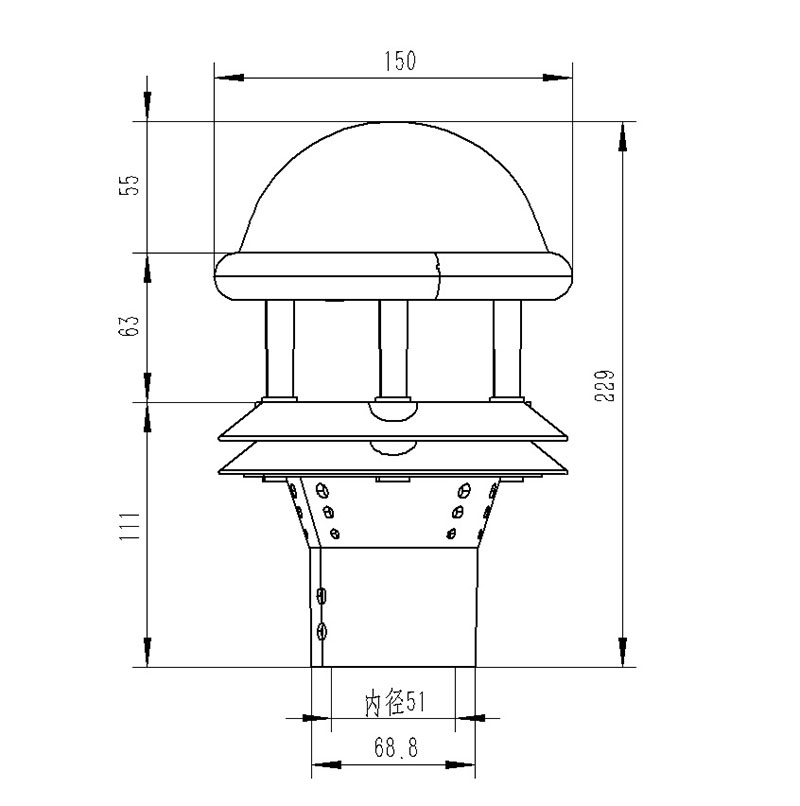Shandong Fengtu IOT Technology Co., Ltd
Sales Manager:Ms. Emily Wang
Cel,Whatsapp,Wechat:+86 15898932201
Email:info@fengtutec.com
Add:No. 155 Optoelectronic Industry Accelerator, Gaoxin District, Weifang, Shandong, China

Sales Manager:Ms. Emily Wang
Cel,Whatsapp,Wechat:+86 15898932201
Email:info@fengtutec.com
Add:No. 155 Optoelectronic Industry Accelerator, Gaoxin District, Weifang, Shandong, China

Model:FT-G1
Brand:fengtu
1.Optical Rain Gauge Product Introduction
Optical Rain Gauge determines the presence of raindrops by transmitting beams and receiving scattered light, and calculates rainfall based on the number and size of raindrops.Optical Rain Gauge uses three-channel narrow-band infrared detectors and pure sinusoidal AC signal sources. It has the advantages of high accuracy, strong resistance to ambient light, maintenance-free, and compatibility with other optical sensors (light, ultraviolet radiation, total radiation). It can be widely used in meteorology, agriculture, municipal administration, transportation and other industries. The sensor adopts a low-power design and can be used in unmanned observation stations in the field.
2. Features of Optical Rain Gauge
The Optical Rain Gauge uses a pure sinusoidal infrared light source, a built-in narrow-band filter, and a rain-sensing surface of 78 square centimeters. It can measure rainfall with high precision and is not affected by high-intensity sunlight. The high-transmittance rain-sensing cover does not affect direct sunlight and is compatible with other built-in optical sensors, such as illumination, total radiation, and ultraviolet sensors. (Invention patent, patent number ZL 2022 1 1306149.3)
3. Technical Parameters of Optical Rain Gauge
1. Power supply voltage: DC12V
2.Sensor power consumption: 0.12W
3. Current: 10ma DC12V
4. Rainfall resolution: 0.01mm
5.Rain intensity range: 0-4mm/min
6. Measurement accuracy: ≤±4%
7. Working environment: -40~85℃, 0~100%RH
4. Optical Rain Gauge Product Dimensions

5. Notes on Optical Rain Gauge
1. The sensor should be within a radius of 1 meter horizontally without any obstruction to avoid the impact of water droplets splashing
2. The sensor should be installed in a place where trees are not blocking the sensor, and the sensor should also be installed in a place where trees are not blocking the sensor.
3. To ensure measurement accuracy, the sensor should be installed horizontally
Explosion-proof automatic weather station, mainly used for environmental monitoring and management in electric power, petroleum, chemical and other industries, is a meteorological observation instrument. It can monitor the changes of various meteorological data in the atmosphere exactly within a cer...
Which is the best manufacturer of automatic small weather station? We recommend Windway Technology, a professional manufacturer of automatic mini weather station, which has been in China for many years and has rich technical experience and perfect quality management system. Its products use advanced...
Soil moisture content monitoring station, an integrated monitoring system, integrates soil temperature and moisture detection, data storage, transmission and management functions, which consists of a dedicated data acquisition terminal, soil moisture sensor, solar power generation system and a visua...
The 3D Ultrasonic Anemometer is a high-precision gas flow velocity measurement device, which is widely used in meteorological observation, air quality monitoring, meteorological disaster early warning, built environment monitoring, and wind energy resource assessment. The device calculates wind spee...